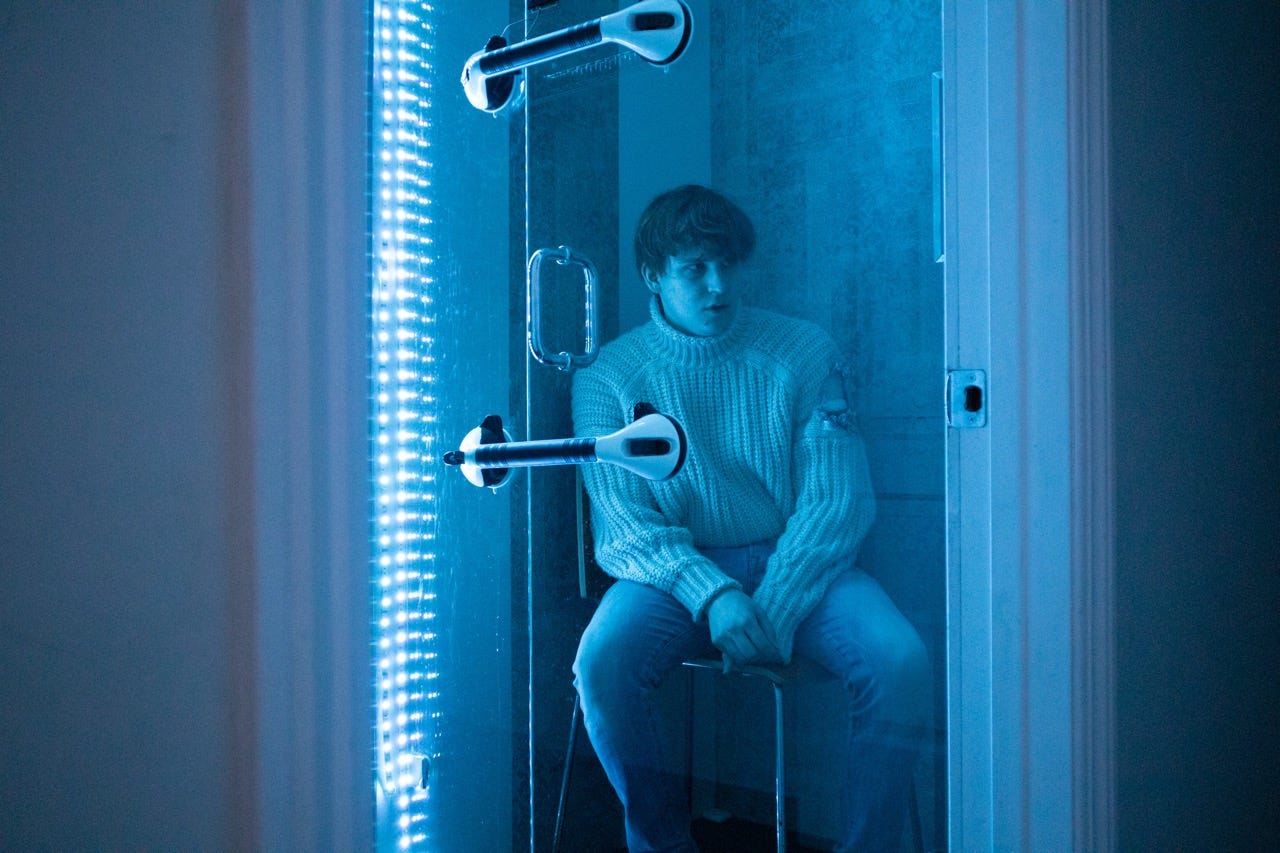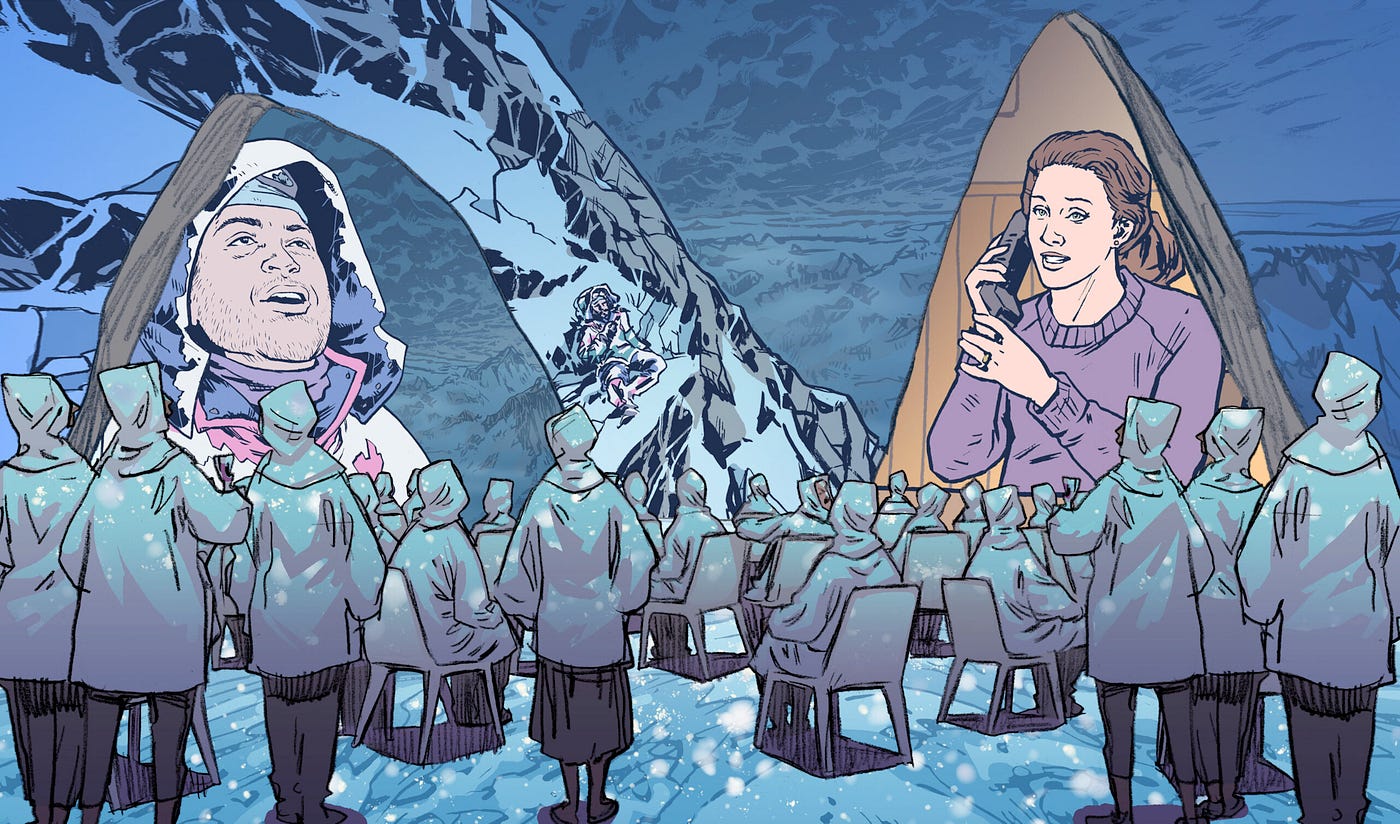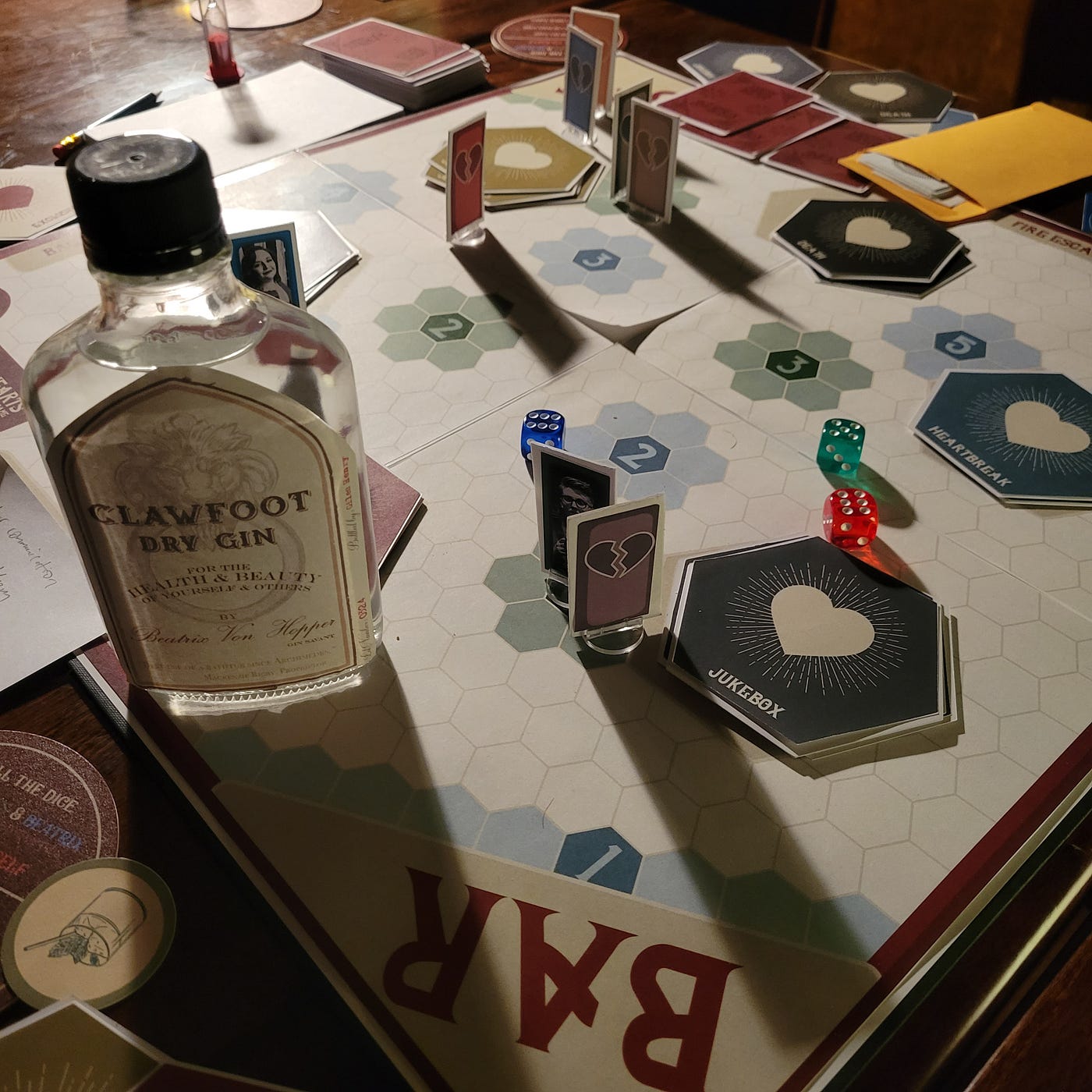Review Rundown: The One With Murder Mysteries, An Evil Ikea, and a Baby in a Well
SEVEN REVIEWS: London, NYC, SF, LA, Chicago and At Home.

This time out we take a second look at the revised The Art of Killin’ It in NYC, check out an “immersive graphic novel opera” in San Francisco, visit an evil IKEA showroom, get our first dispatch of the year from London’s VAULT festival, and even have some Valentine’s Day appropriate events.
There’s seven of these things, so let’s get to it!
Looking for more? Our most recent Review Rundown “The One With Fine Dining in Gotham” is ready to serve you, and justice, alike.
Are you a creator who looks upon these reviews with envy? Okay, the positive ones, at least? Then you might want to check out our How To Get Covered By NoPro guide. Want to get listed in our newsletter and have your event shared with our social media following? Submit a listing to Everything Immersive.
Keep No Proscenium free for all by becoming a Patreon backer today!
The Art of Killin’ It — TheyGotTime Productions
$50; FutureProof, 32 Meadow Street, Brooklyn, NY, 11206; Open run
The Art of Killin’ It is an interactive murder mystery in which the audience help crack the case. What starts out as an album release party for a cringey up and coming artist turns into a whodunit after the night’s star is offed during a blackout. The audience then spends time exploring rooms, looking for evidence, and drawing clues out of characters. After some time, the group meets back in the ballroom and conjures theories about who did it, with what, and for what motive. Once the mystery has been solved, the audience is then led to run from room to room to expose evidence in typical murder mystery fashion.
This experience is high camp, goes blue with humor, and commits to the bit a little too hard from time to time, which is not for everyone, but it is certainly a high energy, slapstick good time. The script is a bit convoluted towards the end, but I imagine this is due to the possibility of multiple endings; more clarity and better justifications would be ideal but it does work in current form. (Maybe it’s a spoiler but there are multiple endings)! The immersivity of the show and audience interaction are both well thought out — I felt cared for, noticed, and actively engaged throughout the experience. (SPOILER ALERT AHEAD!) In the ending I saw, the villain decides to kill everyone with poison darts (audience included) which of course did not exist in real life, but as soon as the darts were released, nearly everyone in the audience performed a death for themselves, which showed me how much buy in the experience was able to produce.
What really makes the show shine is the cast. Everyone in the performance was phenomenal, but a special shoutout to Cheryl played by Julia Zhen who single handedly corralled an enthusiastic audience into working together to solve the murder. Zhen’s adeptness in improv, detail work, and collaborative facilitation were key in this performance and made the experience work really well. I could see an audience running away with the show in the hands of a less experienced immersive performer. The Art of Killin’ It is also almost entirely BIPOC in its cast and creative team, which is a rarity, and the show speaks on themes of racism, blackfishing, and white people stealing BIPOC intellectual property which feels timely and important. Overall, the experience is a hilarious night out with high interactivity and would be well suited for immersive newbies, amateur detectives, and anyone who likes a campy laugh.
— Allie Marotta, New York City Curator

Everest: An Immersive Experience –Opera Parallèle
$20–75; Z-Space, San Francisco, Run concluded
The story of the 1996 Everest disaster is a story that has been told many times, in many formats. Even the genre of ill-fated outdoor expeditions can feel tired once you’ve seen a few disaster movies. However, the genre-defying Everest: An Immersive Experience gives the oft-told story new life.
The experience bills itself as an “immersive graphic novel opera.” Upon entering the theater, you pass through “base camp,” and are handed a white sheet to wear to better blend with the floor to ceiling jagged mountain set. Then, comic-book style animated characters perform a (pre-recorded) opera, projected onto a 360 degree set with surround sound speakers.
The idea all started with Joey Talbot’s 2015 opera, “Everest”, which was adapted into an animated film by Brian Staufenbiel in 2021, and finally, turned into this immersive experience. I wasn’t sure the genre mash-up would work, but once I was in the theater, the form was immediately engaging. For those skeptical of opera or immersive experiences, the show offers an accessible entry point to both.
While the plot is boosted by the naturally compelling real-life events, certain story details and character development seem over simplified, perhaps due to the limitations of opera, where characters can only sing so many words. However, the emotional core of the story comes through, especially thanks to strong performances from the cast. The story effectively conveys the physical intensity of a summit attempt, the ethical questions, and the climbers’ “why.”
At times, it’s clear that the animations allow the opera to feel more alive, as the scenes jump between a character’s hallucinations and back to the disaster on the mountain. Other times, though, the comic book style feels stale, as the characters are two-dimensional and lack some fluidity, mostly only moving their mouths.
Overall, the 96 minute show is a worthwhile way to experience the story of the 1996 expedition, even if only to experience the one of a kind format in action.
— Elissa Mardiney, San Francisco Correspondent

Baby Jessica’s Well-Made Play — Pipeline Theatre Company
$30; Remote; Through March 30
In 1987 an 18 month old child fell down a well, and was trapped for almost three days before thankfully being rescued. The media sensation caused the story to become a world wide phenomenon, as we collectively reflected on “Everybody’s Baby”. Today I am invited to explore this true story further in this remote experience, exploring the narrative and the impact that this cultural touchstone has had on the world.
I create a theatre space in my apartment, following the instructions provided to me. I have myself quite comfortable in the tiniest corner of my home, and the first two acts take place in this site. A kind voiced narrator guides me through this time, as I am invited to listen to the events that took place, and addressed as the child Jessica. Despite the setting, this is not a story of darkness, but one of hope, and I gladly exchange stories with the voice on the end of the line as instructed. I feel cared for, and explicitly listened to, as we delve deeper into the realities that presented themselves during and after Jessica’s rescue.
The next two acts are a true delight, which continue this theme of empathy, truth and storytelling, but I fear would be spoilt if I were to share them with you dear reader. Without giving too much away, the unique concept of this show invites further discussion and listening, while using the 1987 event as a unifying backdrop. I found myself moved, totally immersed, and absolutely intrigued to continue on my experience with the show. I am invited to open up, to share my honest and open thoughts, and in turn I too receive a great gift through the unique format of this show. I would just say to be prepared to continue to “play telephone” as the play continues.
A secret fifth act is due to take place at some point in the future, when a “significant” number of audience members have attended the show. Friends, I would implore you to try to be one of these attendees while you have a chance. Taking place over at least two sittings, this show utilizes it’s time well, and I was excited to take part in each proceeding act. I am pleased to say that the groan-worthy pun of a title is a more than accurate descriptor for this fine piece of immersive theatre.This is a delightful thought provoking work, filled with childlike magic and wonder, that has once again proven the potential of well crafted remote shows — even from the depths of your own closet.
— Edward Mylechreest, New York City Correspondent

Lonely Hearts: The Game — Birch House Immersive
$50 — $750; Chicago, IL; Run Concluded
With the closure of their beloved bar, the regular patrons have created a board game, allowing them to relive the merriment of intimate conversations over drinks. Returning for its sixth year, Birch House Immersive’s yearly Valentine’s Day experience Lonely Hearts is back in-person with an invigorating take on game nights.
The evening starts with performers and audience members mingling over drinks. But additionally this year there’s a variety of small activities to partake in, Birch House adopting elements and concepts from their remote work. Audience members can bid in a silent auction (with winners taking home their prize afterwards) with Monopoly-like money or take prop heavy photos to promote an app. These activities infuse different engagement with Lonely Heart’s lore, a welcomed addition awarding those willing to explore.
But the evening’s pièce de résistance is the board game itself. Audience members are randomly assigned a table, playing among strangers. The board is Clue-like, with the audience moving around the old bar drawing cards to answer open-ended, personal questions. While playing, the performers move between tables, partaking in the questions.
Usually, such intense, vulnerable engagement with strangers is cringe-inducing. But with crafting such thought-provoking questions for years, Birch House proves extremely capable in successfully (and literally) thrusting ownership into the audience’s hands. While there’s initial hesitation among my table, after the first questions we realized not only can we trust the cards, but each other. By the game’s end, secrets, laughs, looks, promises, and dances are shared between us. I started Lonely Hearts with strangers but ended it with friends, being a night I’ll cherish for years.
Yet, occasionally no questions would be asked, as a series of low dice rolls among players prevents drawing cards. If at a friend’s game night, I’d think nothing of it. But during an immersive experience, it feels like a missed opportunity every time a card isn’t drawn.
But these lulls allowed the performers to shine, swooping in to keep conversations going. Chief among them is Christina Renee Jones, who sheds a previous recurring character for a completely different one, showcasing her tremendous talent and ability to engage audiences. Additionally, Eddie Lynch as a cheeseball tech guru and Isabella K. Coelho as an aggressively charming marketing person are both fantastic, heavily committing to their roles with humorous effect.
Between the ever-captivating performances, adopting elements from their remote experiences, and deliberately empowering the audience, Birch House Immersive has pushed themselves into a new chapter of artistic and immersive ingenuity with Lonely Hearts: The Game.
– Patrick B. McLean, Chicago Curator
Get No Proscenium’s stories in your inbox
Join Medium for free to get updates from this writer.
SubscribeSubscribe
Editor’s Note: Dean Corrin, a Birch House Immersive company member, was the reviewer’s professor at DePaul University and previously served as NoPro’s Midwest Curator.

The Love Letter Plays — Unattended Baggage
From $12; Remote; Run concluded
I love letters. I love sending them, I love receiving them. I love the tangibility of them, the way you can glean a bit of the sender’s personality through the contents and the details of their letter — what’s their handwriting like? What kind of stationery did they choose? What interesting things have they tucked between the pages?
Letters — love letters, especially — can tell you a lot about a person. And, sometimes, as in the case of The Love Letter Plays, that’s not always a good thing.
My first letter came typed on neon-pink printer paper and covered with greasy, red kisses and heart-shaped stickers. The actual text of the letter was just as garish as its design — it was filled with vague, sexual innuendo, holiday-themed puns, and an inexplicable reference to White Castle-induced diarrhea that I think was supposed to be funny (Not that poop can’t be funny — this just wasn’t).
Worst of all, the letter was so poorly written I spent the first three read-throughs convinced there was a clue hidden among the random capitalizations, abrupt tense changes, and nonsensical word choices. When I checked the production company’s website, looking for clues, I finally realized that my letter wasn’t a puzzle…it was just really, really bad.
The second letter, when it came, was almost as much of a let down. When I opened the navy blue envelope, I was confused by its contents — a crumbly brown leaf, a bookmark, a business card, and an advertisement for the theatre company’s next production, with a QR code that led to its website. Only after several minutes did I realize the “letter” was a publicly-available video on the project’s website.
The video itself was melancholy and sweetly mundane, and felt like receiving video messages from a long-distance lover as she took me through her day in New York City. But I was bewildered that the company would charge money for a publicly-available video — why not at least make it an unlisted Youtube video?
The third letter, which came several days later, was the best of the three: a multi-page, serial killer-style cut-and-paste note covered in fake blood that listed the escapades of the so-called “Zodiac Lover.” I could tell a lot of thought and work went into this, and it was fun to read — as well as to dig through an included ziplock bag full of creepy souvenirs, including a chunk of long, black (synthetic, I hope) hair.
Taken together, however, the three letters of The Love Letter Plays are confusing, underwhelming, and uneven. And, at the current price point of $30 — $12 for the first letter, $24 for the first two, and $30 for all three — it’s indefensible to send participants a letter that has seemingly never been edited (or even re-read) by the producers, or to charge $12 to re-route them to your website, which they could view for free.
I love letters, I love immersive theatre, and I really wanted to love The Love Letter Plays. I ended up getting the ick instead.
–Cheyenne Ligon, NYC Correspondent

Patient 4620 — Dread Falls Theatre
Tickets from £22, VAULT Festival, London, UK; Run Concluded
Just before the Second World War the artist Gretel Sauerbrot was placed into the Raventhorne Institution and vanished, leaving a disturbing selection of paintings and sketches. During this solo experience I am wheeled in a wheelchair in darkness around a memorial exhibition for Gretel.
Audio commentary by Gretel’s friend tells me stories about Gretel’s paintings and her brother, Hansel, who lost his finger and fell into alcoholism.
The art shows scenes of faceless men and women which, as my eyes adjust to the dim lighting, clearly reveal secrets. Leering faces in the shadows. Phantom figures in the window. Slightly annoyingly the audio description asks “Do you see the face?” Yes. Yes, I do but it was more frightening when I only thought I saw something.
At one point, I am forced to draw with crayons to replace a painting the audio had demanded be removed. I manically draw a face with the various crayons on offer.
This comes back as ‘art therapy’, when a doctor emerges to give me treatment. He speaks of castrating himself as a lost child and dusts me with spice, so I might taste good in a stew.
The audio tour is powerful and atmospheric, offering small glimpses of a wider world, and the paintings are very impressive. Yet the 30 minute experience feels incomplete. The Artist Gretel thread is lost, in order for me to be treated.
In between the exhibits, as I am wheeled through the darkness, I prepare myself for something horrific. A jump scare. A sudden revelation beyond “Maybe YOU are a patient!” It never comes. Maybe post pandemic we are past the immersive era of ghostly hands running through your hair and hot breath in your ear snarling “You need to wake up.”
The only true interactive moments come as I am questioned by the doctor who humorously ignores my answers. I state ”I haven’t felt nausea recently”. He writes down ‘This morning’, offering me pills which are simply buttons.
“Are you paranoid?” he asks.
“It’s not paranoia if they really are out to get you!” I respond.
There are enjoyable aspects to this show, a creepy and atmospheric mystery that makes horrific references to the fairy tale.
Unfortunately this is rather ruined by attempts to shock and unnerve for example the Doctor talking about the removal of his genitals with a rusty beer can and throwing spice on my trousers.
— Thomas Jancis, London Correspondent

Last Call Theatre Presents The Showroom — Last Call Theatre
$35–45; North Hollywood; through March 5th
An evening spent at Last Call Theater’s The Showroom is frustrating, because while a good time can be had it feels in spite of the structures laid down by the creative team.
We’re put in the world of the SCP Foundation, which the company has mined before. Think “What if The X-Files were an exquisite corpse project?” and you have the vibe in a nutshell. It’s solid fodder for interactive work.
For this one, we all take on very lightly sketched out roles of people trapped inside an infinite IKEA, which has spawned a population of its own who are hungry for human blood. Fun, right?
Apparently not enough fun, as the creative team decided we need some murder mystery mixed in with the already layered lore, all of which is dumped on us in multiple briefings (safety, pre-show, in-world) that come on like a tsunami in the first five-ten minutes and have the unfortunate effect of coming off like “that friend who bought the game and reads you the rules excitedly but doesn’t realize you’re tuning out.” (Yes, that run-on sentence was deliberate.)
Worst of all: no one succinctly answers the question of why we, the audience, are stuck inside this infinite IKEA in all of that. At least the company’s prior show Signals gave us a clear reason for why we were playing, if not necessarily a compelling purpose. The framing here feels like a step backward, even with a more compelling and better realized setting. (Nicholas May’s production design is quite clever!)
Once the hope of a strong motivation is dispatched fun can be had by playing with the actors. They’re rather game, with Riley Cole, Abiane Stroebel, and especially Brit Baltazar’s oddball energy being fun to bounce off of. This is a talented bunch who understand the assignment is improving within the guardrails. Time spent playing with them was not wasted, and shows that the company does have some real strength in its ensemble.
Players who seemed to treat it purely as a social deduction game also looked like they were having fun, but seemed to hover above the action from a distance as opposed to being down in it. Could they have the same joy from a straightforward tabletop game?
The pieces do seem to be here for a fun and actually immersive theatrical experience, however, what’s missing is getting the mix right. Hence the frustration, because this team is about two of three clicks away from dialing in the formula and turning in something that works for puzzlers and theatre folks alike. Will Last Call get the formular right? Another show is the works, but with multiple shows already under their belt maybe its time to tighten up what’s already in the catalogue.
— Noah Nelson, Publisher
Discover the latest immersive events, festivals, workshops, and more at our new site EVERYTHING IMMERSIVE, new home of NoPro’s show listings.
NoPro is a labor of love made possible by our generous Patreon backers. Join them today!
In addition to the No Proscenium website, our podcast, and our newsletters, you can find NoPro on Facebook, LinkedIn, YouTube, Twitter, Instagram, in the Facebook community Everything Immersive, and on our Discord.